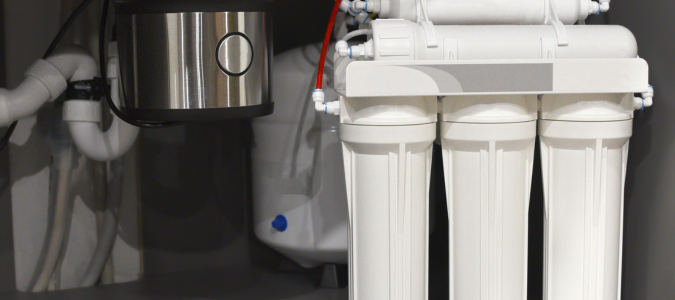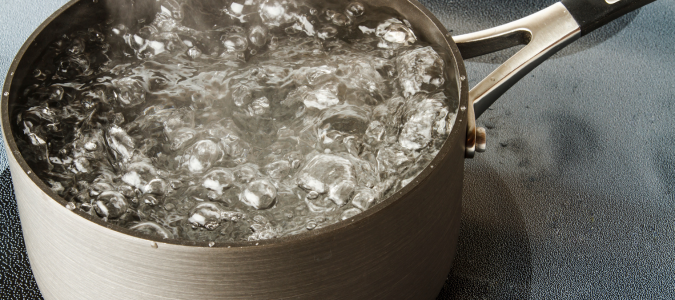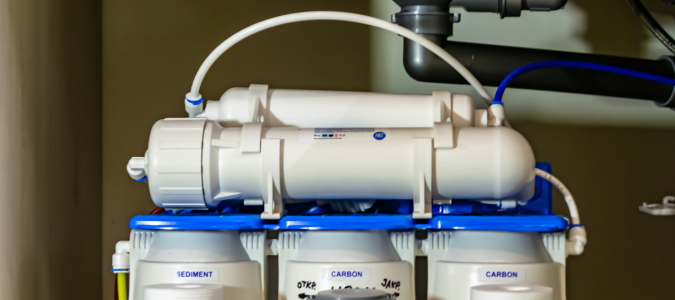These days, chemicals are everywhere, making health a top concern. It can be hard to know what is okay to consume. Even drinking water carries risks because of synthetic chemicals like PFAS. But before you get too worried, know there are ways to ensure your water at home is chemical-free.
If you want peace of mind, let a professional assess your water quality at home. They can then install a water softener or water filtration system and provide regular maintenance to ensure the unit functions effectively. They can also help you understand why water quality is important.
Does Reverse Osmosis Remove PFAS? Everything You Need to Know
PFAS or per- and polyfluorinated substances are man-made chemicals that have been around since the 1940s. They are typically used to make water-resistant or non-stick consumer products. They are also present in firefighting foams and used in various industrial operations.
Here are some common products that can contain PFAS:
- Non-stick cookware
- Microwave popcorn bags
- Pizza boxes
- Water-resistant clothing
- Cleaning products
- Wax, polish and paint
PFAS have widespread applications and stay in the environment for an unknown amount of time. They persist and accumulate in our world, even building up inside humans and animals.
How to Remove PFAS in Water
PFAS dissolve in water. Because of their chemical properties, traditional water treatment methods aren’t enough to eliminate them. The good news is that EPA researchers have discovered that certain technologies can effectively remove them. One of them is reverse osmosis membranes.
So, how does reverse osmosis remove PFAS? It uses energy to force water through a membrane filled with tiny pores. The membrane prevents various contaminants from passing while letting water through. According to the EPA, reverse osmosis membranes are more than 90% effective in filtering out various PFAS, including shorter-chain ones, which have higher mobility in water. Reverse osmosis filters are most effective as a point-of-use treatment, meaning the water is treated at one location.
Aside from reverse osmosis systems, ion exchange resin and granular activated carbon (GAC) are other filter types that can remove PFAS. Ion exchange resins act like powerful magnets, attracting and preventing contaminants from entering the water system. Meanwhile, granular activated carbon traps chemicals and stops them from passing through.
Benefits of a Water Filtration System
If you want clean drinking water at home, a water filter system can be a worthwhile investment. However, not all filters are effective against PFAS, so install one that’s certified to eliminate or reduce these chemicals in drinking water.
According to the EPA, filter certifications currently focus on removing PFOS and PFOA, the two most common types of PFAS. Here’s how to know a water filter system is certified against PFAS:
- Check the unit’s packaging for an “NSF/ANSI53” or “NSF/ANSI58” certification.
- For further confirmation, check the certification body’s website for testing details. You can find the certification body’s mark on the product packaging.
- If you’re still unsure, contact the certification body directly to ask for product details. Their contact information will be on their website.
Various brands offer water filter systems in different forms across a wide price range. If you’re overwhelmed by the choices and need to learn how to choose a water filter system, feel free to consult water quality specialists. They will measure the water quality in your home and recommend a certified water filter based on the results and your budget. In addition, they can perform regular maintenance on your unit to ensure it’s doing its job. Water filter systems are only effective if maintained according to the manufacturer’s instructions.
Does Boiling Tap Water Remove PFAS?
PFAS are created by combining fluorine and carbon, one of the most unbreakable bonds. That means PFAS are nearly indestructible, earning them the title “forever chemicals.” They are stable in water and stay in the environment and our bodies for long periods. The Agency for Toxic Substances and Disease Registry (ATSDR) says it takes four years for a person’s PFAS level to decrease by 50%.
If PFAS are found in consumer products, how do they end up in our drinking water? These water-soluble chemicals seep into surface water and groundwater when they percolate through the soil. Contaminations usually occur in areas that manufacture PFAS or products that contain these chemicals.
Areas near firefighting training centers, airports and military bases are also vulnerable because of the use of PFAS firefighting foam. Lastly, PFAS can get into our water when we throw products containing PFAS into landfills. As these items break down, the chemicals remain in the soil and seep into water sources.
How to Detect PFAS
How do you know if your drinking water at home is safe to consume? Unfortunately, PFAS are tasteless and odorless, making them impossible to detect with just our senses. Testing is the only accurate way to find out. You can ask for a municipal water quality report for peace of mind. Under the law, municipal water providers are required to provide results if you ask for them.
If you’re worried about your drinking water at home containing PFAS, you might think it’s wise to boil it as a safety measure. However, that won’t do anything to remove these chemicals. Heat doesn’t destroy PFAS and will only concentrate them in the water, making them more toxic to you once consumed. Instead of boiling water, use proven treatment methods like reverse osmosis, ion exchange resin and granular activated carbon to remove PFAS in your water supply.
Installing a filter can significantly lower the PFAS level in your water supply. Contact a specialist to help you test the water quality in your home and install a water filter system. That way, you can have peace of mind.
How Do I Remove PFAS From Water at Home?
Many homeowners think that the filter on their refrigerator door or the pitcher on their kitchen countertop filters out all toxins. Unfortunately, many filters can’t remove the most concerning group of chemicals—PFAS. Not even a whole-house filtration system is guaranteed to keep your water PFAS-free.
If you don’t want to worry about PFAS in your water, look for a water filter system with a certification against PFAS. Certified units are guaranteed to remove or reduce PFAS levels in water, especially PFOA and PFOS. These are the three types of technologies proven to eliminate PFAS in water.
High-Pressure Membranes
Reverse osmosis and nanofiltration use high-pressure membranes with impressive effectiveness against PFAS. According to the EPA, these treatments are over 90% effective against these “forever chemicals.” However, there are some notable differences between them.
Nanofiltration membranes filter out hardness to a high degree. However, they’re looser than reverse osmosis membranes and allow sodium chloride to pass. Meanwhile, reverse osmosis membranes remove all salts. Nanofiltration prevents particles from passing through but retains minerals that reverse osmosis eliminates.
Ion Exchange Treatment
Aside from high-pressure membranes, ion exchange resins are another effective treatment you can use at home. They are little beads that pack a powerful magnetic punch. There are two broad categories under ion exchange resins: cationic and anionic.
The negatively charged cationic exchange resins (CER) remove positively charged contaminants. Meanwhile, the positively charged anionic exchange resins (AER) eliminate the negatively charged chemicals like PFAS. AERs have a high capacity for various types of PFAS.
Granular Activated Carbon Filtration
Granular activated carbon (GAC) filtration is the most studied treatment for PFAS. This filter type uses GAC, which is made from raw organic materials like coal or coconut shells. It has numerous pores all over its structure. As water flows through the activated carbon, it traps PFAS and other contaminants through adsorption. Clean drinking water enters through the other side.
GAC filtration comes in two forms: whole-house filters and point-of-use filters. Whole-house filters treat the water that flows through all faucets and fixtures in your home. They remove all chemicals before you can ingest them. Point-of-use filters purify water only at specific locations where they’re installed.
Water filtration systems can be technical, leaving homeowners overwhelmed. If you need help deciding which type to get for your home, let licensed professionals help. They will assess the water quality in your home, install the most fitting water filtration system for your needs and perform regular maintenance.
Want Water Free From PFAS? Let the Pros Help
Water quality should be a top priority for homeowners. If you’re worried about PFAS in your drinking water, be proactive and contact water specialists. They will install a water filtration system certified against PFAS and ensure it works effectively.
ABC Can Improve Your Water Quality
It can be difficult to know if you have PFAS in your home’s water. Fortunately, the professionals at ABC Home & Commercial Services can do all of the hard work for you, so all you have to do is reap the benefits! Our water quality specialists can do everything from testing water quality to installing the best water filtration system for your needs.



